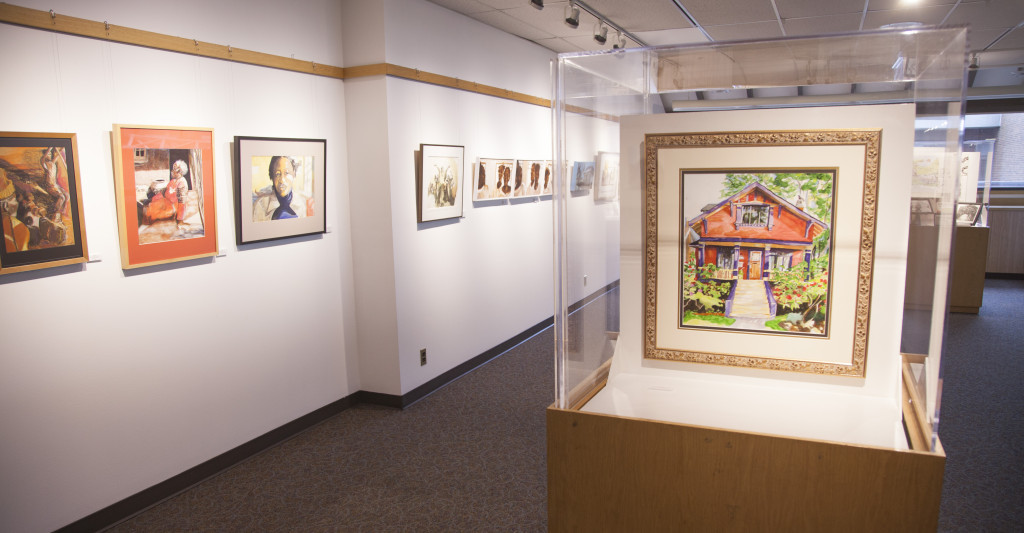Nyla Sunga’s ‘Rhythm Stories’ at Douglas College
By Joel MacKenzie, Staff Writer
Last Friday, September 21, at Douglas College’s Amelia Douglas Art Gallery, I was lucky enough to view Nyla Sunga’s presentation on her new exhibit, Rhythm Stories, which will run from now until November 2. The exhibit chronicles the influence that various stories have had on Sunga throughout her life, particularly those from her interactions with people from the South African country of Lesotho.
Sunga’s love of visual art was evident from a young age, but it wasn’t until she was 20 that she began to realize the importance of different view points. She stated, for instance, that as a child, she always visualized the seasons of the year as being in a triangle shape, with different points of the year representing literal turns and stretches on a track. It wasn’t until a thought provoking conversation she had with a friend that it occurred to her that others didn’t naturally picture the world in the same way. She began to understand everyone’s unique identity, an important element in Rhythm Stories.
The arts seemed to have helped her find her own identity in that time. She grew up in a Jewish neighbourhood in Quebec, with parents of mixed backgrounds: one from a well-off Anglophone family, and one from a less fortunate Francophone family. Her struggle with identifying as one or the other led her to searching for an identity in “a larger context,” a search which led her to many places around the world. One such place was Lesotho, where arts are represented quite differently than they are in North America.
For instance, the people in Lesotho don’t have a word for ‘draw,’ and many do not even understand two-dimensional representations, including one man that Sunga painted, who was understandably “suspicious” of her insistence on paying him to simply sit for hours, and then astonished when he saw himself in her painting. Conversely, this is also a place where no one has to be “talented” to give a speech or “sing in four-part harmonies…they just do it.” Sunga went on to live in Lesotho for two years, where she worked as a teacher and helped support the community by creating an art program.
The art that Africans freely express may have been what helped them to keep strong in times of crisis, like the AIDS epidemic and apartheid, which made Sunga consider Lesotho, at the time of her visit, a “war zone.”
Sunga’s paintings create two-dimensional representations of the told or performed arts that are ingrained in the citizens’ lives. They are vivid and lively, with bright colours, representations of movement, stories written around or in the paintings, and focus on the people’s passionate artistic and physical expressions. Most importantly, they weren’t created simply “to sell;” Sunga wanted them to represent the “stories of lives.” Art, to her, is about “expressing what it is to be human—to be alive in this moment, this time, this circumstance, completely unique… art is striving to connect with the greater meaning outside of our daily material concerns.”
The exhibit represents one’s striving to understand identity of themselves and of others; the individuality that keeps us simultaneously separate and connected.



